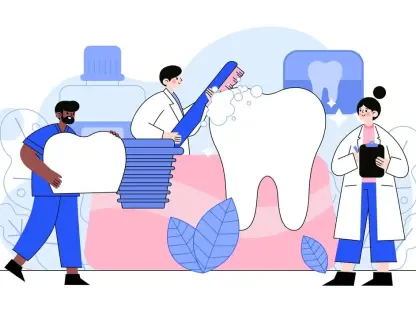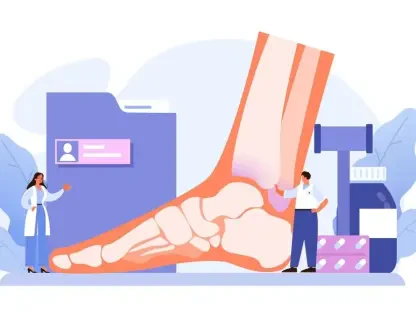Faisal Zain is not just a figure in the medical technology field; he’s a passionate advocate for using innovation to resolve some of the most pressing healthcare challenges. His insights into the intersection of policy, technology, and community health services offer a unique perspective on the current landscape of addiction recovery programs affected by federal funding fluctuations.
Can you describe the immediate impact the funding cuts had on addiction recovery programs in different states?
The funding cuts hit many states hard and fast, causing immediate layoffs and service shutdowns in some programs. In Indiana, for instance, an organization focusing on peer support had to lay off employees, and a digital support service in Texas was on the brink of closing its helpline. The situation was dire in states like Minnesota, affecting outreach to vulnerable communities. These cuts disrupted much-needed continuity in care, which is vital for addiction recovery.
What services do these addiction recovery programs usually provide that often aren’t covered by insurance?
Addiction recovery programs do far more than traditional therapy; they offer practical and social support often overlooked by insurance, like transportation to medical and legal appointments and job training. These services are crucial for helping individuals rebuild their lives and reintegrate into society, providing stability that goes beyond medication and therapy.
How have the funding cuts affected the ability of recovery programs to retain staff?
Retaining staff has become a significant challenge after the cuts. Programs are finding it hard to rehire staff they had to lay off, and reviving curtailed services isn’t feasible without stable funding. The uncertainty surrounding future finances makes it tough to plan ahead and offer job security, which is critical for both retaining skilled staff and ensuring consistent support for individuals in recovery.
From your perspective, what does the reorganization of the Department of Health and Human Services mean for addiction recovery services?
The reorganization could dilute the focus on addiction recovery services, risking a decrease in dedicated support and funding. Having a specific federal agency like the Substance Abuse and Mental Health Services Administration is crucial for maintaining a clear mandate and resources specifically directed toward addiction recovery. Without such focus, marginalized services might struggle for visibility and priority.
What’s your response to the statement that the reorganization aims to improve efficiency and prioritize funding projects aligned with the president’s initiative?
While the stated goals aim to streamline resources, there’s skepticism about whether this will truly enhance efficiency. Many advocates fear it may lead to marginalized services being deprioritized under broader health agendas. The intentions might be positive, but the practical outcomes could differ, particularly if they don’t address the unique needs of addiction recovery.
How has the uncertainty stemming from potential future funding cuts affected the morale and planning capabilities of your organization?
Uncertainty has severely impacted morale and the ability to plan strategically. Organizations are forced into a reactive mode, addressing crises as they arise rather than planning long-term. Some have had to create contingency plans, although implementing them adds to the financial and administrative burdens already faced.
Can you share the consequences of withdrawing support for specific demographics, such as pregnant women with substance use disorders?
Pulling back support from vulnerable groups like pregnant women with substance use disorders can have devastating consequences. These programs are vital for maternal and child health, reducing complications and promoting recovery. Without them, both maternal health and child development suffer significantly, increasing future healthcare costs and societal burden.
Do you think the administration’s actions align with their stated goals of creating a recovery-ready workforce and reducing reliance on welfare benefits?
There seems to be a disconnect between stated goals and actions. The cuts undermine efforts to build a recovery-ready workforce, as essential services are critical for helping individuals transition from reliance on welfare to self-sufficiency. Without these supports, achieving such goals becomes much harder, if not impossible.
What long-term effects could these funding cuts have on the addiction recovery landscape in the U.S.?
Long-term, these cuts risk stalling or reversing progress made in addiction recovery, leading to increased relapse rates and a higher societal burden of addiction. Community attitudes might shift negatively without visible evidence of successful recovery stories, causing a decline in support for such initiatives.
How can local communities, private foundations, or state governments step in to fill the funding gap?
Local and state bodies can play a crucial role by developing partnerships and seeking out private funding. Collaborative efforts can address shortfalls, though matching federal funding levels remains a challenge. Innovative local solutions and state support can help bridge gaps, but widespread sustainability would likely require systemic reforms.
What kind of personal stories can you share that highlight the importance of continuous support from recovery programs?
Programs have transformative impacts on individuals, such as those who find solid ground after overcoming addiction. One example includes a new mother supported by Garcia’s program who became a peer recovery doula, now helping others navigate similar journeys. These personal transformations highlight the essential role of these services.
In what ways do programs that provide community events and social support help people in recovery?
Community programs create crucial social connections and experiences that help individuals enjoy life without substances. Cutting these events deprives individuals of healthy socialization opportunities, increasing risks of isolation and relapse. Shared activities like hikes or sports foster camaraderie and reinforce sober living.
What role does cultural and linguistic outreach play in addiction recovery programs, especially in diverse communities?
Cultural and linguistic outreach is vital to effectively engaging diverse communities, offering services that are accessible and relevant. In areas with rich cultural tapestries, the ability to communicate in familiar languages builds trust and encourages individuals to seek and continue treatment, which might otherwise be inaccessible.
Do you have any advice for our readers?
Navigating these challenges requires resilience and proactive community involvement. Supporting local initiatives, advocating for policy changes, and raising awareness can drive change. Individual contributions, whether through volunteering, donations, or spreading the word, can collectively bolster efforts to fill the gaps left by funding cuts.









